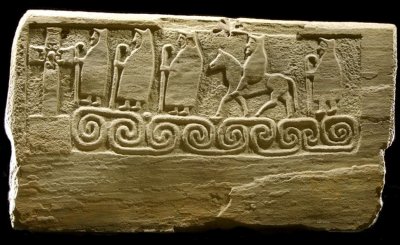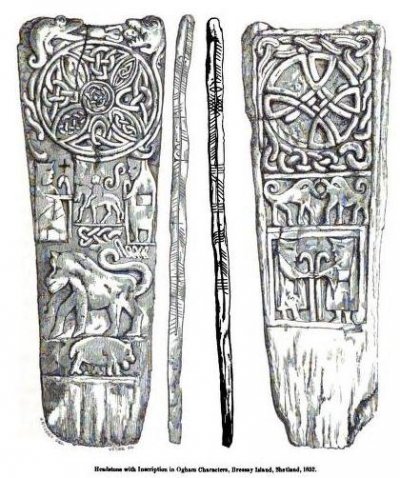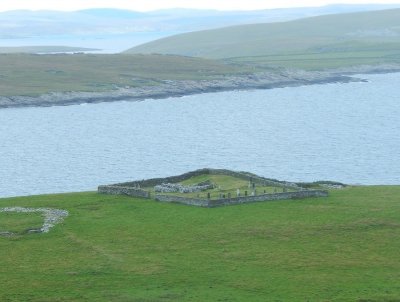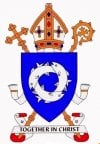Celtic Missionaries to Shetland
One of the most tangible links to Shetland's early Christian past is the Monk's Stone found in the churchyard at Papil on Burra Isle.

It probably dates from the eighth century (the time of St Bede and the Golden Age of Lindisfarne) and shows five monks, one on horseback. It came from a saint's shrine and may represent the first Celtic missionaries to Shetland. One interpretation is: "Holy men, carrying gospel books (or portable altars) is satchels, with an elderly saint (or bishop - the rider), cam across the sea where they set up the Cross." The stone is now in the Lerwick museum.
Standing at Lerwick harbour it is possible to see the coastguard look-out tower on Ander Hill, Bressay. About a mile to the north of this (to your left, looking from Lerwick) is another important early Christian site at Cullingsburgh. An elaborate stone with a carved cross and the figures of monks (very similar to those found at Papil) was found here and it is of special interest since it shows a mix of Celtic and Scandinavian styles. This was probably carved in the late Ninth Century when the Viking settlement of Shetland had already begun and it has an inscription in Ogham script.

The early Vikings were pagan and most of the early Celtic sites were probably destroyed. It is likely that there had been many small monasteries of Irish or Celtic monks using Shetland as a staging point on missions even further north to the Faroe Islands and Iceland.
Archaeological research in the 1960s identified likely sites for Celtic hermitages at Blue Mull, Unst on the Burrier of West Sandwick, Yell, and on the Kame of Isbister in Northmavine. The many place names including 'Papa' or 'Papil' also comemmorate Christian sites which pre-date the Scandinavian settlement.

At Cullingsburgh you can still see the ruins of the medieval church of St Mary. The graveyard runs over an earlier prehistoric broch which rises up on the east side. The Bressay stone was found near here. The medieval church may well sit on the earlier Celtic site. Was it a monastery? Who knows, the Bressay stone is carved from schist which is found on Burra Isle but not here. Whoever carved it probably had the Papil stone available before him as a model for the figures of the monks.
It is certainly in a beautiful location beside the sea and is well worth the walk up from the Bressay Ferry. A copy of the Bressay Stone can be seen in the Lerwick Museum.
At this date Shetland was part of the Pictish kingdoms which covered large parts of North East Scotland. Much new information on the 'Papa' sites can now be found on the "Papar Project" website. A link follows.



